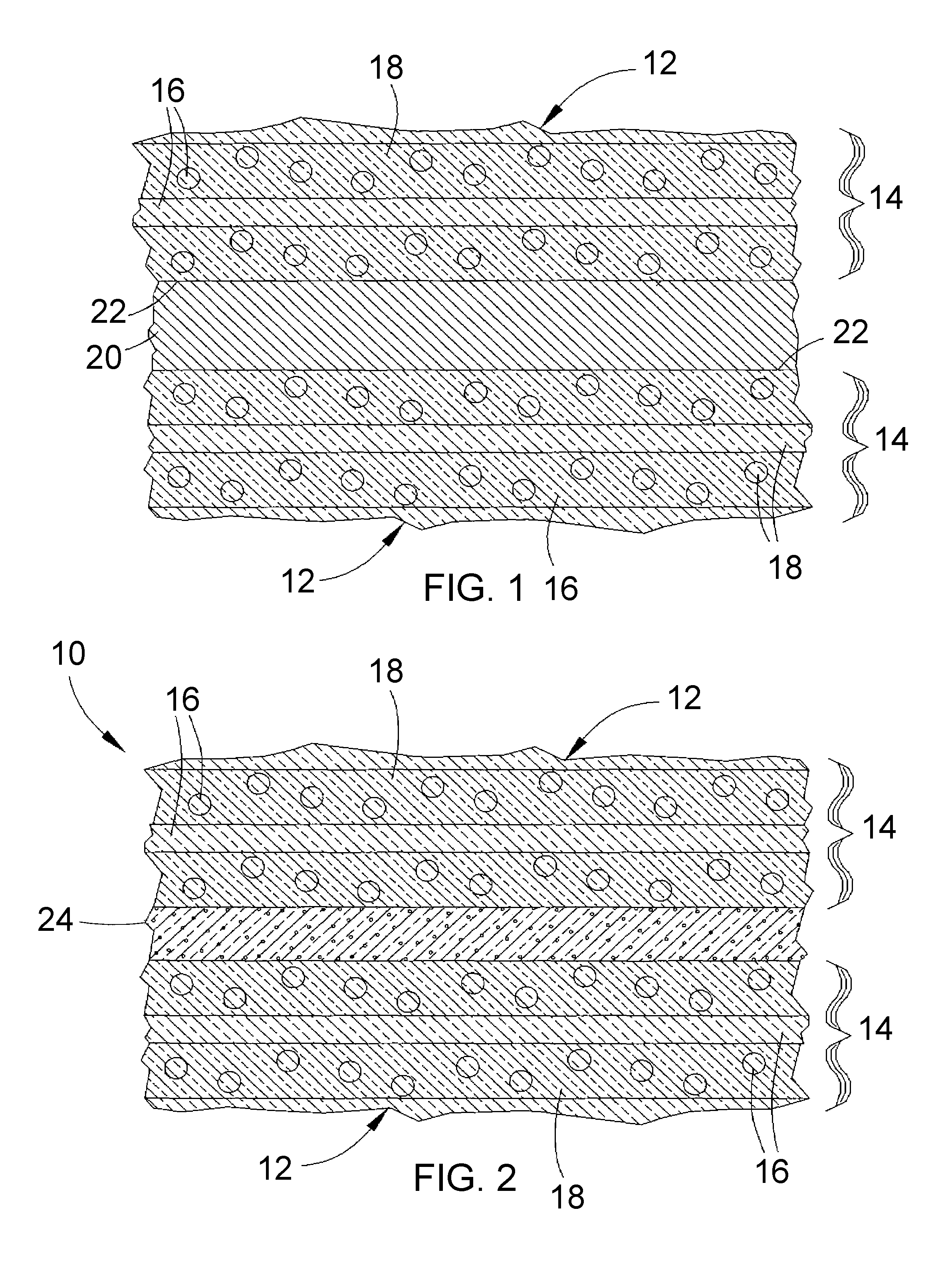Process for joining silicon-containing ceramic articles and components produced thereby
a technology of ceramic articles and silicon-containing materials, applied in the field of ceramic articles, can solve the problems of general weakness of silicon joints and mechanical degradation of bodies
- Summary
- Abstract
- Description
- Claims
- Application Information
AI Technical Summary
Benefits of technology
Problems solved by technology
Method used
Image
Examples
Embodiment Construction
[0014]The present invention will be described in terms of processes for producing components by joining ceramic articles and / or CMC articles (including CFCC articles) that contain silicon carbide and free silicon as monolithic compositions or matrix materials of the articles. CMC materials of particular interest to the invention are those containing silicon carbide as the reinforcement material, a particular example of which is continuous silicon carbide fibers in a matrix of silicon carbide and silicon. However, other silicon-containing ceramic materials are also believed to be within the scope of the invention. While various applications are foreseeable, particular applications include components of gas turbine engines, such as blades (buckets), vanes (nozzles), shrouds, combustor liners, and other high-temperature components within the hot gas path of a gas turbine engine.
[0015]FIG. 1 schematically represents a pair of CMC articles 12 that are represented as being formed of CFCC ...
PUM
| Property | Measurement | Unit |
|---|---|---|
| temperature | aaaaa | aaaaa |
| melting temperature | aaaaa | aaaaa |
| thickness | aaaaa | aaaaa |
Abstract
Description
Claims
Application Information
 Login to View More
Login to View More - R&D
- Intellectual Property
- Life Sciences
- Materials
- Tech Scout
- Unparalleled Data Quality
- Higher Quality Content
- 60% Fewer Hallucinations
Browse by: Latest US Patents, China's latest patents, Technical Efficacy Thesaurus, Application Domain, Technology Topic, Popular Technical Reports.
© 2025 PatSnap. All rights reserved.Legal|Privacy policy|Modern Slavery Act Transparency Statement|Sitemap|About US| Contact US: help@patsnap.com


